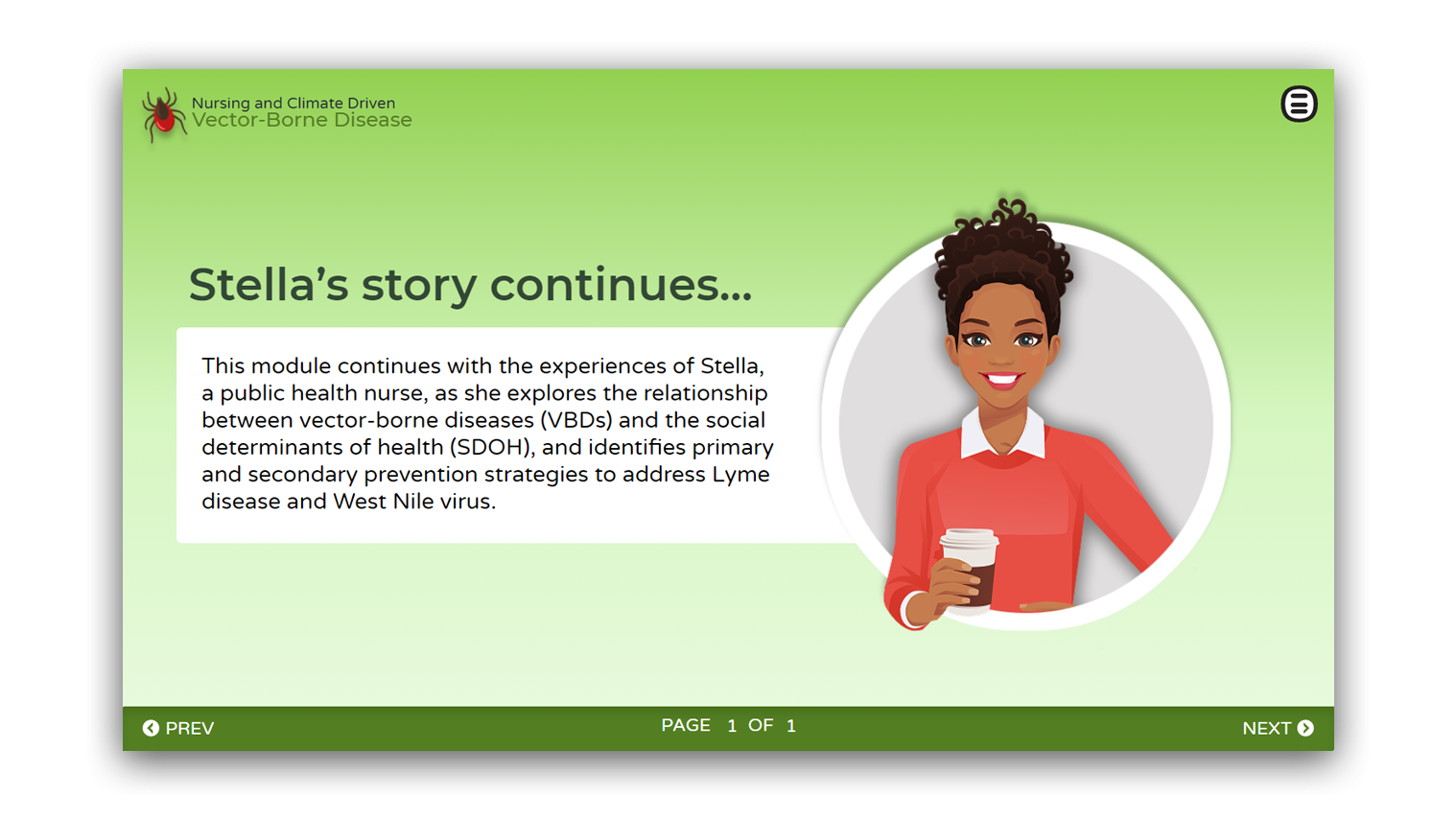
Module 3 focuses on risk and protective factors for VBDs, as well as primary preventive strategies to address VBD, including mitigation, risk assessments, protective health measures, and surveillance. Secondary preventative strategies and key public health initiatives for Lyme disease and West Nile Virus are also addressed.
Learning outcomes for this module:
By the end of this module, the learner will be able to:
- Explain ecological, social and environmental risk as well as protective factors and determinants of health for individuals, families, communities, and populations in relation to VBDs (1.3)
- Discuss the current best evidence around prevention, diagnoses, and treatment of VBD in Canada) (1.7)
- Demonstrate awareness of key public health initiatives related to VBD at national, regional and local levels (1.8)
- Demonstrate awareness of VBD surveillance practices and programs, and understand their implications for population health (1.10)
- Explain primary and secondary prevention and protection strategies, integrating diverse ways of learning and knowing to reduce risks of exposure and facilitate early detection (3.1)
- Identify key primary and secondary prevention resources and protective health measures to control VBDs (3.2)
- Identify relevant international primary and secondary prevention resources and collaborative strategies (3.3)
- Describe how social determinants of health impact the prevention, diagnosis and treatment of VBDs (2.1)
- Identify the circumstances that put individuals, families, communities, and populations more at-risk of acquiring VBDs and/or for the adverse effects of VBDs, such as biological factors and social, economic, and environmental determinants of health and their intersection (2.2)

Module 3 focuses on risk and protective factors for VBDs, as well as primary preventive strategies to address VBD, including mitigation, risk assessments, protective health measures, and surveillance. Secondary preventative strategies and key public health initiatives for Lyme disease and West Nile Virus are also addressed.
Learning outcomes for this module:
By the end of this module, the learner will be able to:
- Explain ecological, social and environmental risk as well as protective factors and determinants of health for individuals, families, communities, and populations in relation to VBDs (1.3)
- Discuss the current best evidence around prevention, diagnoses, and treatment of VBD in Canada) (1.7)
- Demonstrate awareness of key public health initiatives related to VBD at national, regional and local levels (1.8)
- Demonstrate awareness of VBD surveillance practices and programs, and understand their implications for population health (1.10)
- Explain primary and secondary prevention and protection strategies, integrating diverse ways of learning and knowing to reduce risks of exposure and facilitate early detection (3.1)
- Identify key primary and secondary prevention resources and protective health measures to control VBDs (3.2)
- Identify relevant international primary and secondary prevention resources and collaborative strategies (3.3)
- Describe how social determinants of health impact the prevention, diagnosis and treatment of VBDs (2.1)
- Identify the circumstances that put individuals, families, communities, and populations more at-risk of acquiring VBDs and/or for the adverse effects of VBDs, such as biological factors and social, economic, and environmental determinants of health and their intersection (2.2)

